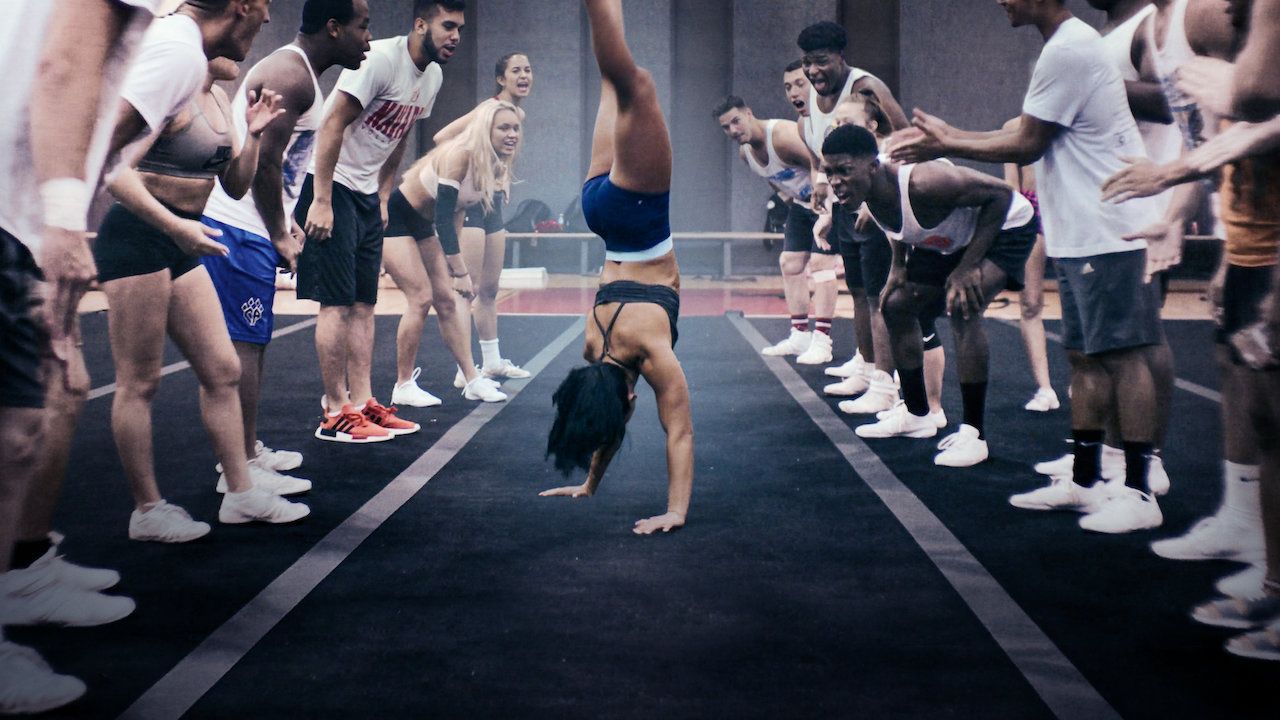
Behind the scenes of the American dream in the Netflix docu-series 'Cheerleader' 6 episodes that follow the lives of the Navarro College athletes
One of Netflix's new Titles of the Moment caught my attention on one of that January winter Sundays where the combo sofa+blanket seems the only possible. The title - Cheerleader- in big capital letters, two pompoms and 5 seconds of the trailer were more than enough to had me press Play.
The latest Netflix’s documentary takes place in the tiny Texan town of Corsicana, that counts roughly 24,000 inhabitants, 9,000 of them are students at Navarro College. The institute is a public community college, i.e. are primarily two-year public institutions providing lower-level tertiary education. Anyway, the level of education isn’t the most important thing to some particular students because Navarro College happens to have the best cheerleading program of the nation, which has won 14 national NCA titles, the most important acknowledgement in the category, and has its own Netflix documentary now. Athletes from every state in the U.S. (and even Canada) choose a small town that they didn’t know existed till recently in order to join that particular cheerleading team.
At this point, we have to take a step back and do a necessary clarification: especially if you happen to be American or foreigners and don’t know how things are here in Italy. Well, cheerleading does not exist in Italy nor Europe. For us, cheerleading is mainly dances and girly screams made by beautiful girls on the side of the football pitch, while the players are resting halfway through the game. Well, forget this, here things get serious and the girls wear skimpy skirts, bows, several layers of self-tanner and pretty heavy makeup, but only when they have to compete. The rest of the time they are barely recognizable, under layers of sweat while jumping here and there. It’s true to say that cheerleading has evolved along with the figure of the woman: it started as an entertaining activity but now has earned the title and recognition of a real competitive sport, although obviously there are still some prejudices in the American culture.
It is part of artistic gymnastics, part acrobatic rock and part circus, this sport carries the highest rate of catastrophic injuries to girl athletes in sports. But this doesn't mean that the team is made up only by girls: to do all those crazy stunts you also need guys (and pretty pumped ones) who throw them in the air and, possibly, catch them before they crash to the ground. Watching the show you can see really incredible things, perfect bodies that unfortunately are often dented, broken and abused by hours and hours of training (you don’t see the members of the team studying pretty often, probably a true representation of their everyday life).
The very white and very Christian coach Monica Aldama, the reason why all of those young people move to Texas, in one of the many face-to-face solo interviews she gives, says that in order to protect her boys, most of them gay, she is not afraid to confront the pastor of her parish and openly states that she does not share the Church's ideas on homosexuality. Monica is a powerful and charismatic figure who runs the team like a small business, perhaps also thanks to her MBA in Economics, and who accepts nothing but perfection. We would all need Monica to help us manage our lives. Monica wants the best, she can motivate you, keep you in line, organize your day and make you perform at your best, simply because you can't do otherwise. Monica doesn't care if you woke up sick if you're tired or if you got drunk the night before.
Her character fits perfectly into the story, which is nothing more than the embodiment of the American dream and of the ideal that "anything is possible, you just have to believe it". It's sometimes shocking to think how this kind of production in our country is absolutely unthinkable, not only for the lack of raw material (in this case, cheerleaders) but also and above all for a total absence of that self-determination of Italians as winners at all costs, which so well suits the American people. Because obviously no one of that young athletes has been spoon-fed, basically everyone comes from broken families (some examples: mother in jail, father missing, bullied child, teenagers living alone in caravans, father missing, drug abuses) and yet. Yet they succeed with mere constancy and willpower. They managed to become part of the team and ---- SPOILER ALERT ---- to win also the 2019 title of national champions at the NCA. All the sweat, tears, accidents that we see during the 6 episodes and 336 minutes were needed to create the 2 minutes and 15 seconds of the final performance that granted the victory to our favourite Navarro College.
And then what? What happens after you win everything? When the moment you've been waiting for all the year has gone? What's even crazier is that there's no future in this sport. As Natalie Adams, author of Cheerleader! An American icon says after college, everyone simply stops being a cheerleader and has to figure it out what to do with their life, where to channel that talent, what to do with the years to come, remembering those moments as "the best of their lives". You can't become a professional and live with your talent, as most basketball or football players do at those levels.
Maybe only the last episode sheds light behind the scenes of the American dream, showing that maybe dreams are not enough, you also need a plan B. But Cheerleader leaves us with a long-standing question because after all, we ended up wondering if it's not worth sacrificing everything for that single moment of glory. The view from the top of the pyramid must be really beautiful.




























































